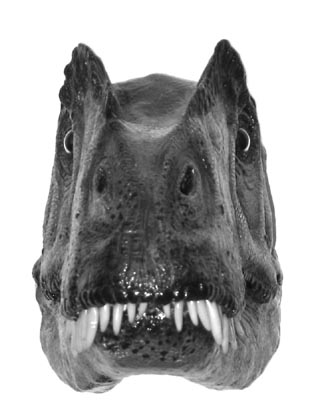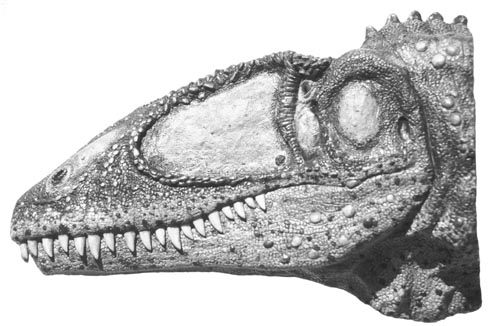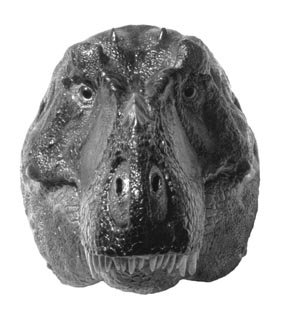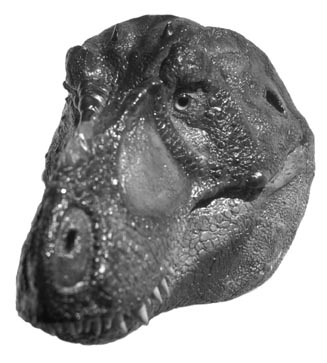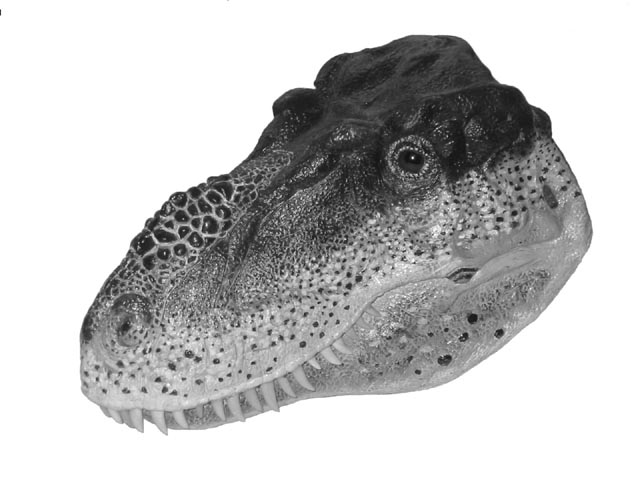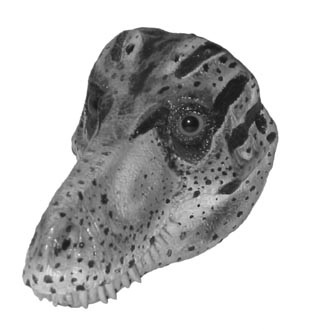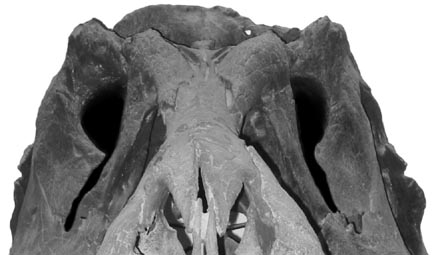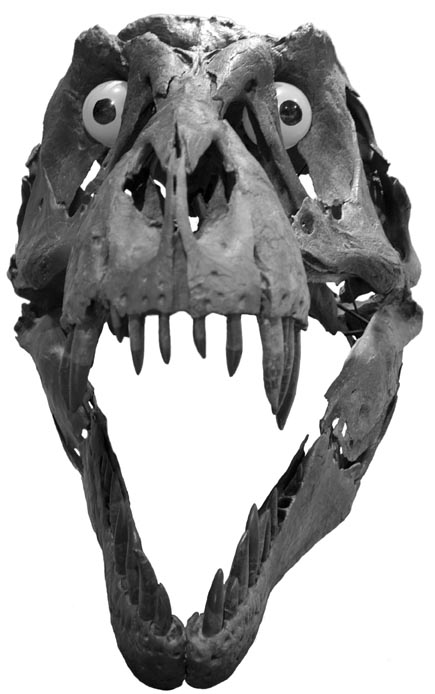The Binocular Vision in Theropod Dinosaurs
Just after my presenting a talk on binocular vision (at the International Conference and NATO Advanced Research Workshop on Binocular and Optic Flow) at York University, Toronto, in June, 1993, I visited the Royal Ontario Museum. There I met the paleoartist Garfield Minott, who was working on a life reconstruction of Tyrannosaurus rex in collaboration with Thomas Carr. Garfield subsequently created a number of sculptures for me (see below): Allosaurus, Carcharodontosaurus, Tyrannosaurus, Daspletosaurus, Nanotyrannus, and Velociraptor.
An ophthalmic technique for measuring and assessing visual fields (called perimetry) was turned inside out and used to estimate the width of the binocular fields in these theropods. While conventional perimetry involves a human patient or subject reporting on the visibility of a probe that is presented at varying eccentricities and elevations, my technique of inverse perimetry permits estimation of whether a given probe would be visible, based on whether there is a clear, unobstructed, view of the pupil along a line of sight at a given eccentricity and elevation. The pupil (modeled by a taxidermic eye) was illuminated by a laser simply to assure visibility, and a glass plate was interpositioned between the observer and the model (see below). The plate was used to record the locus of visibility of the laser's glint at different elevations. The observer shifted the line of sight laterally such that the pupil was nearly obscured by the rostrum. Underlying inverse perimetry is the Bugblatter Principle, named after the Ravenous Bugblatter Beast of Traal (Douglas Adams' Hitchhiker's Guide to the Universe), a creature "so mind-bogglingly stupid that it assumes that if you can't see it, then it can't see you".
|
Inverse perimetry performed on Velociraptor mongoliensis. A glass plate placed between model and observer was used to trace the locus where the glint of the laser reflecting off the eye is just obscured by the snout (segment highlighted, left). Completed tracing is shown from an anterior view (right).
This tracing was subsequently digitized and the locus trigonometrically converted to angular deflections, permitting estimation of the angular width of the BFoV for this and the other theropods in this study.
|
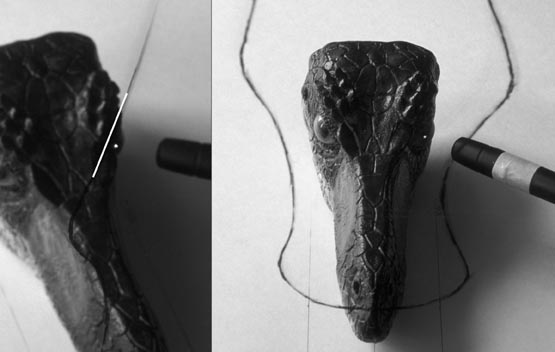 |
Stevens, K.A. 2006 Binocular vision in theropod dinosaurs. Journal of Vertebrate Paleontology 26(2):321-330.
presents the BFoV maps of these theropods, compares estimates of allosauroid versus coelurosaurid binocular vision, relates these trends to predatory style, and provides bracketed estimates of the spatial acuity and binocular depth sensitivity of Tyrannosaurus rex.
Members and subscribers can download the pdf from the JVP, or email me at kent <at sign> cs.uoregon.edu and I will gladly provide you a copy for "personal use but not for re-distribution" as the "Society of Vertebrate Paleontology is the copyright holder of the article and the pdf". A short synopsis appeared in Science News.
A recent discussion of the perceptual abilities of Tyrannosaurus rex that appeared in Science notes that this study and a recent CT scans of the semicircular canals by Lawrence Witmer and Ryan Ridgely independently suggest that T. rex habitually would have held its head dipped 5-10 degrees downward.
| The narrow-set eyes, tall rostrum, and prominent lacrimals greatly limit the width of the region of binocular vision for Allosaurus fragilis. Reconstruction based on (Madsen, 1976). The region of space that could be seen simultaneously by both eyes will be termed the Binocular Field of View (BFoV). |
|
|
|
Carcharodontosaurus saharicus reconstruction based on an earlier reconstruction sculpted for Paul Sereno and the National Geographic Society. The tall, elongate rostrum obscures severely limits binocular vision at low elevations.
|
|
|
| Tyrannosaurus rex had excellent vision above and aside the snout. Reconstruction derived from a cast of American Museum of Natural History specimen 5027. |
|
|
|
Daspletosaurus torosus (left) based on the holotype specimen 8506, Canadian Museum of Nature, Aylmer, Quebec, and Nanotyrannus lancensis (right) modeled on Cleveland Museum of Natural History specimen 754.
|
|
|
|
The orbits and lacrimals of Tyrannosaurus rex (left) reminds me of a Corinthian helmet in this view of Black Hills Institute of Geologic Research specimen "Stan" (BHI 3033).
The orbit diameter (right) for "Stan" was estimated by "inflated elastic spherical membranes" (= party balloons). Neal Larson, BHIGR, provided inflation, measurements, pupils, and photograph.
|
|
|
And now for something completely different: MIT LÁTTAK A DINOSZAURUSZOK? Enjoy an automatically-generated translation of an Hungarian website (which covers the 1998 Earth Magazine article on theropod binocular vision) ... bouncy-bouncy.
Copyright © 2011 Kent A. Stevens, University of Oregon



